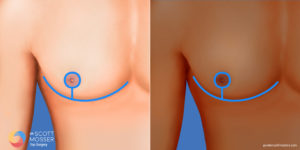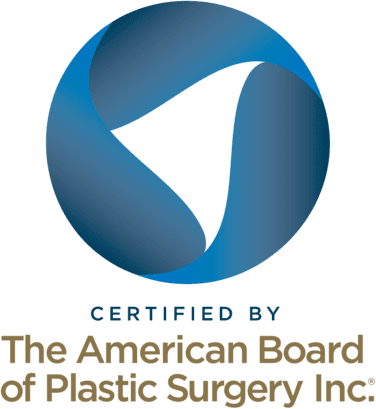What is Breast Reduction Surgery?
Medically reviewed by Jennifer Richman, PA on April 24, 2025.
Breast reduction is a surgical procedure that involves the removal of what is considered excess breast tissue, creating a more lifted appearance. Breast reductions can be covered by insurance when they are deemed medically necessary for health reasons or due to gender dysphoria. This can also be a cosmetic surgical procedure. Most of these procedures can be performed on an outpatient basis, with those who used a board-certified surgeon reporting high satisfaction and recovery rates.
Purpose and Benefits
A breast reduction procedure is often pursued to help with the following concerns.
Medically Necessary Justifications
A breast reduction surgery can be covered by insurance as a medically necessary procedure if it helps to treat any of the following concerns:
- Gender dysphoria: incongruence between gender identity and the appearance of the breasts
- Chronic upper back and shoulder pain
- Chronic skin rashes or skin irritation from shoulder grooving or bra strap indentations
- Difficulty breathing or sleeping
- Difficulty with exercise or physical activity
- Thoracic outlet syndrome: nerve pain
- Treatment of Gynecomastia
Benefits
Many patients who do not meet the requirements to classify their breast reduction as a medically necessary procedure are still interested in undergoing the procedure for other reasons:
- Relief of back pain and skin irritation
- Easier to breathe and exercise
- Easier to find bras and clothes that fit
- Improved self-confidence, body image, and comfort
Surgical Consultation
Please note that at the Gender Confirmation Center (GCC), we only offer gender-affirming breast reductions to trans, non-binary, and gender non-conforming patients. You can request a free consultation with one of our board-certified surgeons here.
Procedure: Surgical Techniques
Your surgeon can use either liposuction or excision techniques, the methods may vary depending on how much fat or tissue is being removed. The most common technique for breast reduction is the inverted T or anchor incision technique. This involves cutting around the nipple-areola complex to keep it attached to its initial blood and nerve supply. Excess skin, fat, and breast tissue are removed, leaving the patient with an anchor-shaped incision that goes from their nipple to their inframammary breast fold.
Risks and Complications
Patients can expect bruising, inflammation, and temporary sensation loss immediately after surgery as a part of the recovery process. Each of these complications should reduce over the first few weeks and months after the breast reduction operation.
Other complications may include:
- Scarring: Patients should expect an inverted T-shaped scar on the breasts for the rest of their lives after surgery. Scar care can reduce the likelihood of scar-related complications.
- Sensation loss: Every patient will have a different outcome when it comes to nipple sensation loss. Anecdotally, most patients report losing about 20% of the sensitivity in their nipples long-term post-op.
- Breastfeeding/chestfeeding: Since a breast reduction can reduce the likelihood of your ability to breastfeed/chestfeed, some patients decide to put off this surgery until after. You can consult a surgeon to see if the surgical technique can be altered to increase your chances of being able to breastfeed or chestfeed post-op.
If you are planning on breast/chest feeding or are currently participating in a weight-loss program, we advise that you hold off on augmentation procedures, as these factors can often result in changes to breast size.
Frequently Asked Questions about Breast Reduction and Augmentation
How much does breast reduction cost?
Breast reduction top surgery can cost anywhere from $8,500-$11,500 for patients without insurance. This cost estimate does not include additional costs like facility or anesthesia fees. Insurance coverage can significantly reduce the costs of breast augmentation surgery.
For transgender, non-binary, and gender variant patients interested in undergoing a gender-affirming breast reduction using their health insurance, you will need to acquire a support letter from a licensed mental health professional to have the procedure classified by insurance as medically necessary.
What is recovery like for breast reduction surgery?
Patients will generally be able to leave the hospital or surgical center the same day of surgery. They will most often come home with surgical dressings, drains, and a compression wrap or bra that they will have to keep on for about a week after surgery. Bruising and inflammation will significantly reduce during the three weeks after surgery. You will have to limit weight lifting and physical activities during the first six weeks of recovery.
Inflammation will continue to resolve until 4-6 months after surgery, which is when patients will be able to start seeing their final breast reduction results. Still, scars will take 12 months to mature. With proper care, patients can expect breast reduction scar discoloration and texture to reduce over time.
Mastectomy vs. Top Surgery vs. Breast Augmentation: Which procedure is right for me? How flat should I go for top surgery?
Patients who are not sure how flat they want to go after top surgery are often contemplating two factors:
- Chest volume: Do you like the idea of having some volume to your chest? When you bind, if your chest isn’t completely flat, do you like that level of volume, or does it bother you? Do you want to still be able to wear bras and clothing that could show off smaller breasts? Some patients describe the advantage of an aggressive breast reduction as being able to have a more “gender fluid“ appearance: they can more easily reveal and conceal breast volume as they wish.
- Nipple sensation: Many patients are interested in maintaining heightened nipple sensitivity after surgery. Historically, reduction techniques have been one of the few options that leave patients with a higher probability of maintaining nipple sensitivity. However, with advancements and surgical techniques, there are now options for sensation preservation for patients who want a flatter chest.
Request a Free Surgical Consultation Today.
All virtual and in-person consultations with our board-certified surgeons are free. Once you fill out this form, our patient care team will reach out and guide you through every step to get to surgery.








